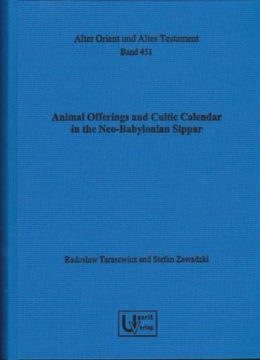The results of our research were influenced by the decision to copy all unpublished and several published documents relating to animal offerings, as the collations, confronted with other studies, led us to new important reading. Radosław Tarasewicz is personally responsible for copies, although establishing the value of some badly preserved signs was made possible on the basis of parallels identified by him (R.T.) or by Stefan Zawadzki (S.Z.) or as a result of simple analysis of the tablet. The precision in the copying of the signs made it possible to identify them and/or to establish the meaning of some phrases sometimes much later then the copy was made. Although the influence of Tarasewicz on final form of transliteration of badly preserved fragments is enormous, both authors are commonly responsible for texts edition (chapter 8), which is the result of many discussions and collations, then the long process of preparing the 7 Myers 2002. 8 Zawadzki 2006. 9 Waerzeggers 2010. 10 Tarasewicz 2008, PhD dissertation and Tarasewicz 2012; Kozuh 2014. 11 Robbins’s study of the animal offerings lists from Uruk demonstrated that on this basis it is possible to identify ordinary and feast days there. 1. Introduction: The role of animal offerings 3 transliterations, first on paper, then re-writing the texts from hand transliteration to computer and translate them. The outcome of the study was also importantly influenced by the identification of several unpublished documents (the majority were identified by Tarasewicz during his studies on animal husbandry in Sippar), which shed new light on the increase in offerings in the time of Nebuchadnezzar and later, especially in the Persian period.
- Veröffentlicht am Donnerstag 8. März 2018 von Ugarit
- ISBN: 9783868352696
- 1068 Seiten
- Genre: Antike, Geschichte, Sachbücher, Vor- und Frühgeschichte
